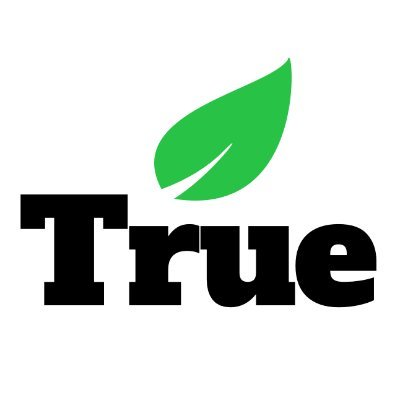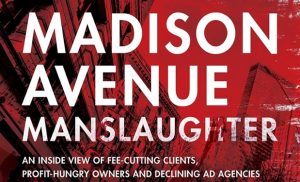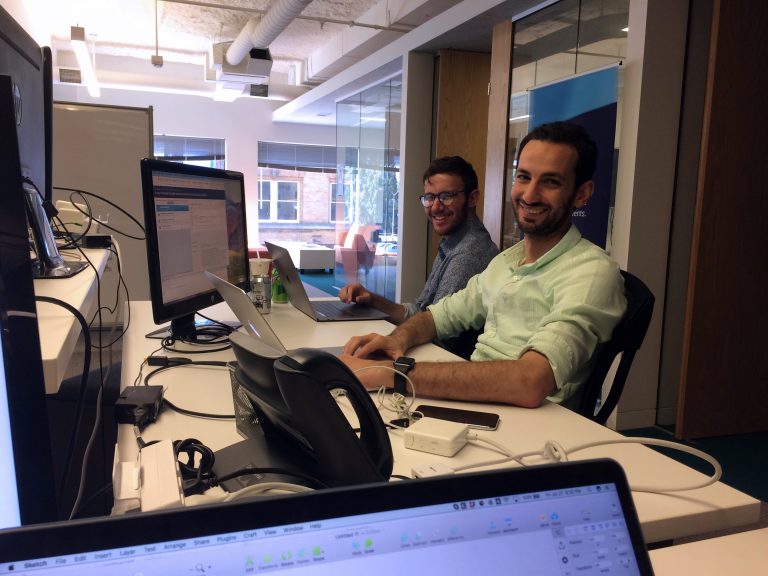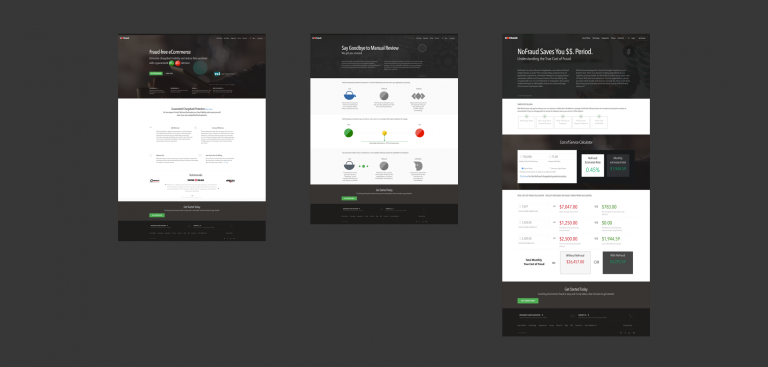The rise-and-conquer story of the advertising industry after the end of World War II has become woven into the fabric of modern American folklore: ads and commercials from the Golden Age of advertising (1945-1975) are forever etched in Baby Boomers’ memories, while the industry’s Mad Men themselves have been celebrated and further mythologized in our entertainment. The ad agency exec archetype, with his swagger and his 3-martini lunch, is one of the most familiar characters in American culture, while those actual Mad Men of the Golden Age, who pounded their concepts of “Big Ideas”, “Creativity”, and “Unlimited Service” to their clients, established such a mark upon advertising agency culture that it pervades the industry to this day, and remains the template for today’s advertising.
The problem with this, according to Michael Farmer, Chairman of Farmer & Company LLC, a strategy consulting firm for advertising agencies and advertisers, is that the industry has been turned completely on its head since the Golden Age, and the paradigms that were then in place then cannot address the state of the industry today. Peril is close at hand:
Today’s Mad Men celebrate new clients and creative awards just like the Mad Men of yesteryear, with champagne, parties and laudatory speeches, but the resemblance and the fun stop there. Returning to their daily routines, ad agency people put on a brave face, struggle with increasing workloads and demanding clients, and feel like players on a losing team, unable to break out or at least pull even with their clients as respected, secure partners. The advertising business, which was once one of the most fulfilling and glamorous of industries has become a grim sweatshop for the people who do the work.
The system is broken, says Mr. Farmer, and the ad industry is in dire straits. His riveting new book Madison Avenue Manslaughter recounts the “dizzying heights” of the Mad Men days, and tracks a timeline of the key events and technologies – such as remuneration changes, globalization, new ownership, shareholder value, and digital and social media – which brought about the weakening health of today’s advertising agencies, and are now typified by ever-growing and unaccountable workloads, reduced client fees, and shortened or one-off client engagements.
With a richly depicted history and a candid, thorough examination of the current state of advertising agencies, Madison Avenue Manslaughter lays out a detailed 10-step transformation program for those progressive industry CEOs who want to “restore organizational health, financial well being and renewed strategic relevance for their ad agencies”.
I recently had a short conversation with Michael Farmer, where we discussed Madison Avenue Manslaughter and mused about the future of the advertising industry.
Michael, first let me commend you on your book. As an advertising industry outsider, the setup of your argument– the comprehensive history and explanation of the current state of affairs– was so richly detailed, it felt like a page-turner. I learned quite a lot; the theme of your book brought to my mind a quote by Albert Einstein that I think is quite applicable to what you are describing:
We can’t solve problems by using the same kind of thinking we used when we created them.
How does this resonate in your mind with regards to what you describe in your book?
It’s hard to argue with Einstein! Yet, the mystery of the ad agency business is that executives are wedded to the concepts that created success in the period 1960 through 1980 — even though the conditions that allowed this past success do not exist. For example, agencies still believe that “highly creative TV ads drive client brand sales.” Well, that was true when TV was a novelty, as it was in the ‘60’s and ‘70’s, and amusing ads were a new thing….but today? TV ads are no longer a novelty, and we’re familiar with all the cliches and attempts to amuse. We’ve each digested several hundred thousand ads since that day, and we’re sick of them! Pure creativity is not the formula for success. Furthermore, agencies are paid 1/3rd what they used to be paid, so they can’t afford “full service.” Let’s face it, the world has changed, but they’re stuck in the past.
Agency remuneration in the Golden Age was commissions-based. Can you briefly describe the shift to today’s model, and what effect this has on workload?
Agencies then received 15% of their clients’ spend on media — for TV, radio and print. That covered ad creation. How much work they did was irrelevant to how much they were paid. In the ‘90s, though, most of the industry was required to change to “fee-based” remuneration, which means they are paid for the number and cost of people who work on a client’s account, plus some additional money for overhead and profit. This should correlate with the amount of work they do, but in fact it does not! Clients and agencies agree on fees and agency headcounts / fees, but nowhere in the system do they clearly spell out how much work is to be done and how many people it actually requires to get it done. This is a holdover from the “full service” days when remuneration was based on commissions. The new system, then, allows clients to grow the workloads but hold the agency fees and resources (people) constant, and that’s what happens. Workloads grow, but fees and resources are driven downwards. More work, fewer people. A complete disaster, and it continues every day!
You make an observation in your book that even as SOW communication happens after-the-fact, creative workloads skyrocket, unmeasured and completely independent of agency resources or fees, the typical agency C-level indeed does NOT want to know about or address this issue. Can you elaborate on the managerial passivity that pervades the industry, and why that is the case?
The passivity is irresponsible, in my view. Agency CEOs are not doing enough to ensure that their agencies are paid for all the work they do. They are reluctant to throw their weight behind “SOW tracking systems” that would be updated regularly by their senior client heads, and they absolutely are uninterested in reviewing client head performance — finding out who is giving away work and who is not. I can’t understand this, but it appears that they don’t really want to manage their organizations. They want to win new business and be viewed as creative geniuses, but they have little appetite for the hard work of management.
Your consultancy has built a database of Scope of Work (SOW) briefs, and has established a metric for measuring workload across them: the ScopeMetric(R) Unit, or SMU. Can you briefly explain the metric, how your organization uses it, and why it’s important?
Early in my consulting career with agencies, I found that I needed three things to understand agency operations: 1) the amount of work they were doing for each client; 2) their fees by client; and 3) the resources they allocated to each client. This is simply logical: “what are you doing for each client; how much are they paying you; how many people does it take.” Across an agency office of 20 clients, there would surely be “good clients” and “bad clients,” where the alignment among workload, fees and resources was out of whack. I needed to identify those situations. In order to do so, I had to figure out how to measure workload. Today, there’s a huge difference among the relative sizes of a TV ad, a print ad, a Tweet, and an online ad banner. I decided to use creative manhours as my basic measurement, using them to measure the size of different deliverables, categorized by media type (i.e., TV), media detail (TV:30), origination versus adaptation, and according to creative complexity (low, average, high).
I now have a database of about 7,000 deliverables, each with a unique SMU value based on creative manhours. The use of an SMU allows me to calculate “price” (fees divided by SMU workloads), “productivity” (SMUs per creative person per year) and other metrics.
Advertising agencies do not have a system in place for measuring workloads. Do you know of any turnkey “workload management platforms”, SOW measurement and management tools, or other solutions on the market today? Are there any early adopters?
Advertisers, on their own, have used systems like Decideware to keep track of agency deliverables, but even Decideware does not have a way of measuring the amount of work in the SOWs, We may team up with them to combine Farmer metrics with their system. Agencies, though, are resisters.
So what can be done? What is the ‘next best step’ that agency C-level management can take, right now?
If I were an agency CEO today, my first step would be to announce a policy. It would sound something like this:
Every client that we serve will have its SOW documented in a uniform way, using an agency-wide SOW tracking system using Farmer’s SMU metrics. Every client head will ensure that his / her SOWs are kept up to date in the tracking system.. Every quarter, we will review client performance, client-by-client, examining the alignment of client workloads, fees and agency resources. Clients whose workloads, fees and resources are misaligned in some way — like ‘too much work and too little fee’ — will require corrective action by client heads. We will review client head performance in correcting misalignments. Needless to say, it is imperative for our agency to be paid correctly for all the work we carry out, and for the resources required to carry out the work.
Michael, your book is currently for sale, and provides readers with a detailed cross-section of the operations and financials of a model agency, as well as a 10-step transformation program for CEOs. Are there any other resources, online or otherwise that you would recommend to your audience?
I write a blog from time to time, and it is published on http://farmerandco.com. The blog is a place where I can comment on developments in the industry associated with the under management of SOWs and agency remuneration. I try to make this an interesting resource — let me know how well I’m doing!
Madison Avenue Manslaughter is the winner of the 2016 Axiom Awards Gold Medal for Marketing Books, and is available online and in selected bookstores nationwide.







